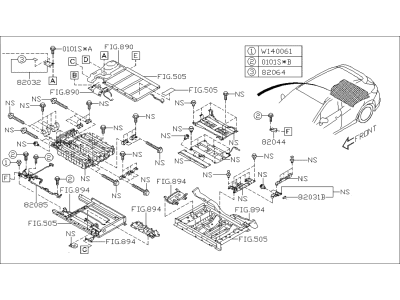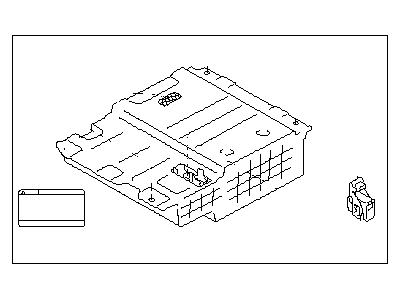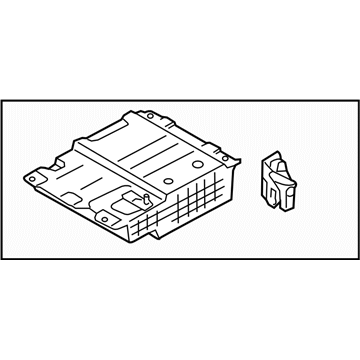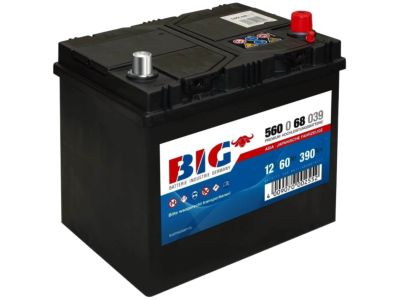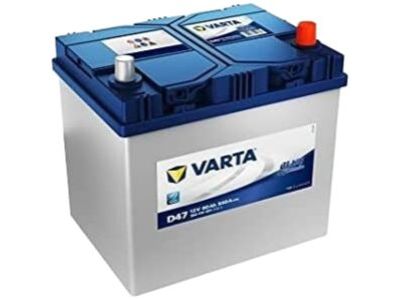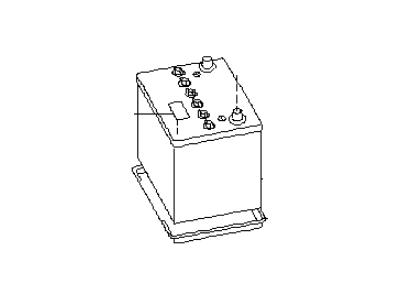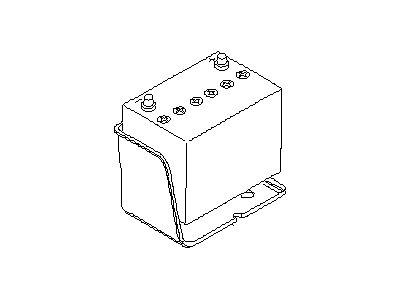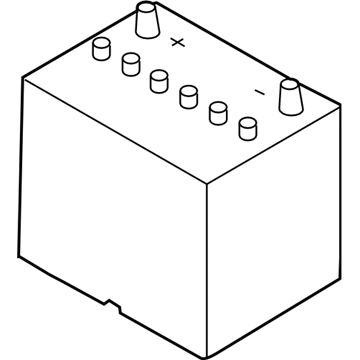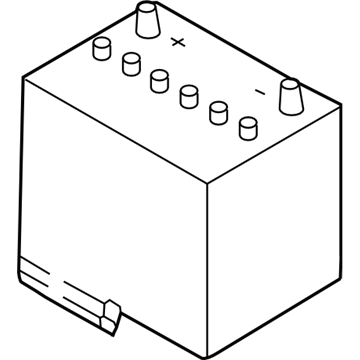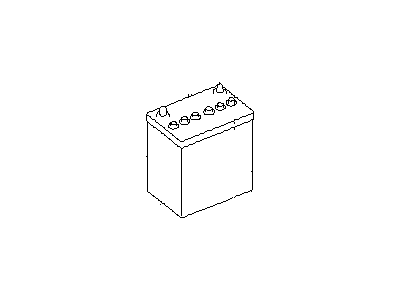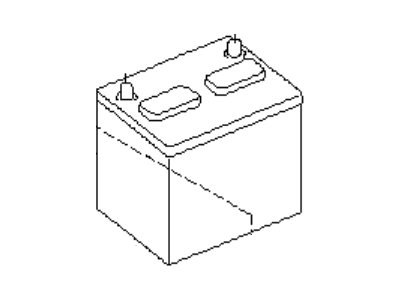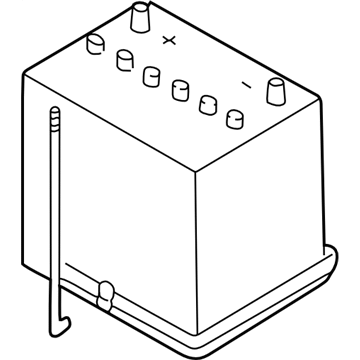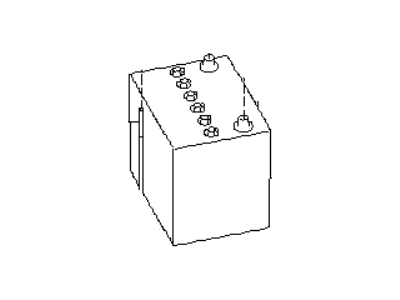×
- Hello
- Login or Register
- Quick Links
- Live Chat
- Track Order
- Parts Availability
- RMA
- Help Center
- Contact Us
- Shop for
- Subaru Parts
- Subaru Accessories


My Garage
My Account
Cart
Genuine Subaru Car Batteries
Auto Battery- Select Vehicle by Model
- Select Vehicle by VIN
Select Vehicle by Model
orMake
Model
Year
Select Vehicle by VIN
For the most accurate results, select vehicle by your VIN (Vehicle Identification Number).
20 Car Batteries found
Subaru Main Bat Assembly HEV
Part Number: 82009FL501$18840.60 MSRP: $23557.14You Save: $4716.54 (21%)Ships in 1-3 Business DaysProduct Specifications- Replaced by: 82009FL502
Subaru PB001262 Hybrid Battery A
Part Number: 82009FJ000$4238.13 MSRP: $5300.41You Save: $1062.28 (21%)Ships in 1-3 Business DaysProduct Specifications- Other Name: Battery-Main
- Replaced by: 82009FJ003
Subaru PB001262 Hybrid Battery A
Part Number: 82009FJ001$4238.13 MSRP: $5300.41You Save: $1062.28 (21%)Ships in 1-3 Business DaysProduct Specifications- Other Name: Battery-Main; Battery, Battery Assembly
- Replaced by: 82009FJ003
Subaru Main Bat Assembly HEV
Part Number: 82009FL500$18840.60 MSRP: $23557.14You Save: $4716.54 (21%)Ships in 1-3 Business DaysProduct Specifications- Replaced by: 82009FL502
 Product Specifications
Product Specifications- Other Name: Battery
- Manufacturer Note: 55D23L-MF
- Product Specifications
- Other Name: Battery
- Manufacturer Note: 75D23L
- Product Specifications
- Other Name: Battery
- Manufacturer Note: 55D23L-MF
- Product Specifications
- Other Name: Battery
- Manufacturer Note: 55D23L-MF
- Product Specifications
- Manufacturer Note: 65D23L-MF
- Product Specifications
- Other Name: Battery
- Manufacturer Note: 75D23L-MF
- Product Specifications
- Manufacturer Note: 80D26R-MF
- Product Specifications
- Manufacturer Note: 80D26R-MF
- Product Specifications
- Other Name: Battery
- Manufacturer Note: 75D23L-MF
- Product Specifications
- Other Name: Battery
- Manufacturer Note: 55D23L-MF
- Product Specifications
- Manufacturer Note: 75D23R-MF
- Product Specifications
- Manufacturer Note: 55D23R
- Product Specifications
- Other Name: Battery
- Manufacturer Note: 75D23L-MF
- Product Specifications
- Other Name: Battery
- Manufacturer Note: 55D23L-MF
- Product Specifications
- Other Name: Battery
- Product Specifications
- Other Name: Battery
- Manufacturer Note: 75D23L
Subaru Car Batteries
The Car Batteries plays an important role in keeping a Subaru vehicle in peak performance. Without a functional Subaru Car Batteries, your vehicle is risking severe performance problems or even a total breakdown. However, with regular checks and replacement of this part, you can avoid these issues. SubaruPartsDeal is your source for genuine OEM Subaru Car Batteries, and they are designed to keep your vehicle in good condition. Shop with us, you will get a superior product, and save big by avoiding expensive repairs down the line.
Subaru Car Batteries Parts Questions & Experts Answers
- Q: Why is a Routine Preventive Maintenance Program Important for Car Batteries in a Subaru Impreza?A:Rapid and easy starting is possible only if your vehicle's battery has a routine preventive maintenance program. For any battery maintenance, make sure you are properly equipped to work around the battery safely. Take caution when handling the battery for example by turning off engine and all accessories and disconnecting the negative terminal cable. The hydrogen gas generated by the battery is explosive as well as flammable hence no sparking or lighting near it, ensure that it charges in a properly ventilated area. In addition to that also be wary of sulfuric acid which is poisonous and corrosive in the electrolyte by wearing protective safety glasses while keeping this away from eyes, skin and clothes. Check its external condition for any damage or loose connections, clean any corrosion on it using a brush made specifically for batteries and an aqueous solution of warm water mixed with baking soda thereafter. Ensure that the battery tray is in good condition and hold-down clamp bolts are tight enough not to move out of place so easily. Use a zinc based primer and paint if there are any corroded metallic parts . It is recommended that you remove a charging battery from your vehicle to prevent paint damage due to escaping gases. The best way to recharge a discharged battery or simply keep it charged up is through slow charging with one or two ampere charger units which have been specially designed for this purpose alone Avoid using high amperage chargers or rapid boost charges as they can stress the battery causing further untold harm towards it. When charging, all cell caps (if any) should be removed, holes covered with a clean piece of cloth, then charger cables clamped onto posts of the cells being loaded. During charging check regularly whether the cell getting too hot ,and if they have removable caps , test with hydrometer specific gravity . Some batteries having sealed tops contain built-in hydrometers/voltmeters that show their level of charge. A fully charged battery would read 12.6 volts or above.
Related Subaru Parts
Browse by Model
Ascent Car Batteries BRZ Car Batteries Baja Car Batteries Crosstrek Car Batteries Forester Car Batteries Impreza Car Batteries Impreza STI Car Batteries Impreza WRX Car Batteries Legacy Car Batteries Outback Car Batteries SVX Car Batteries Tribeca Car Batteries WRX Car Batteries WRX STI Car Batteries XV Crosstrek Car Batteries
